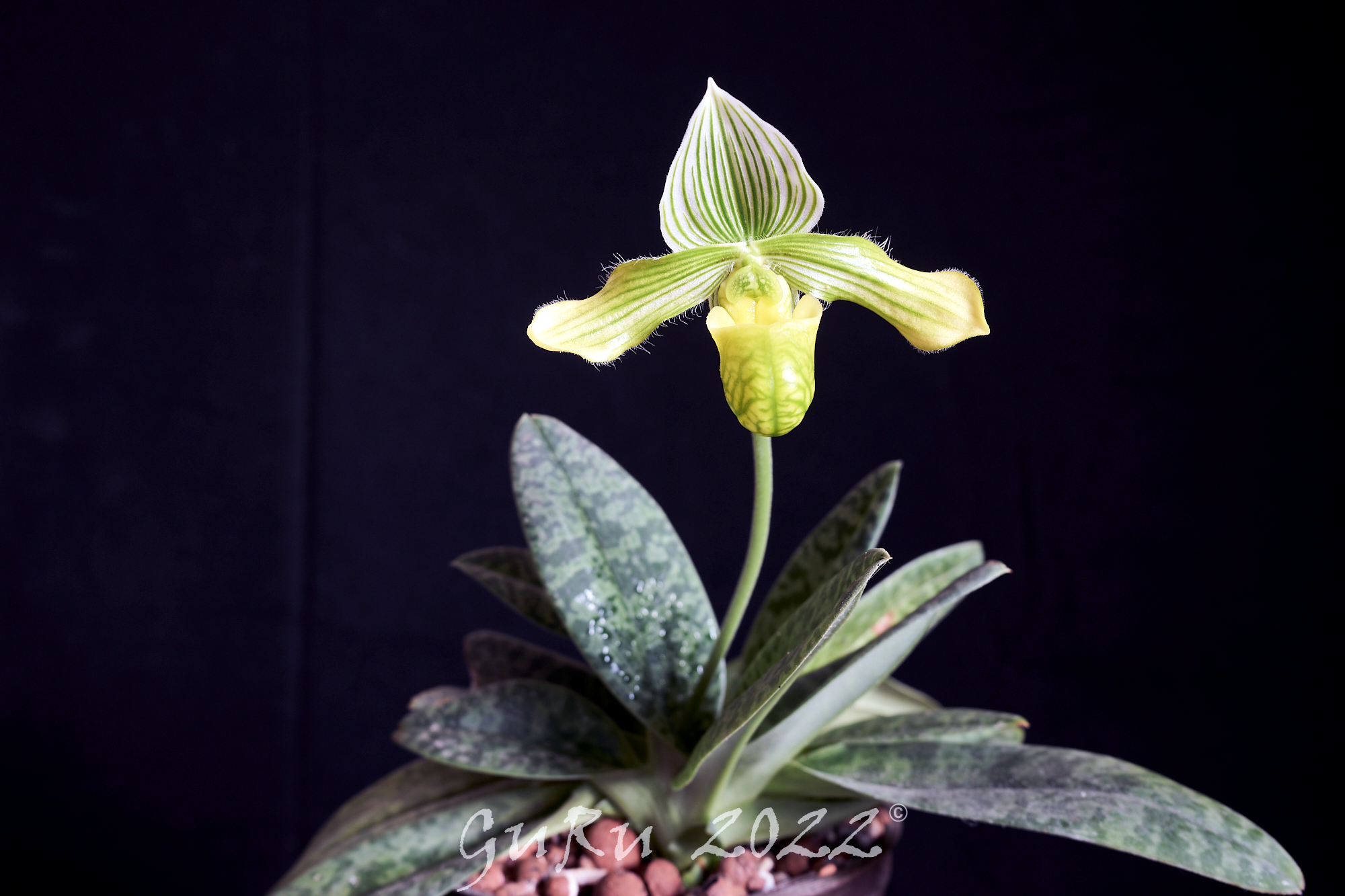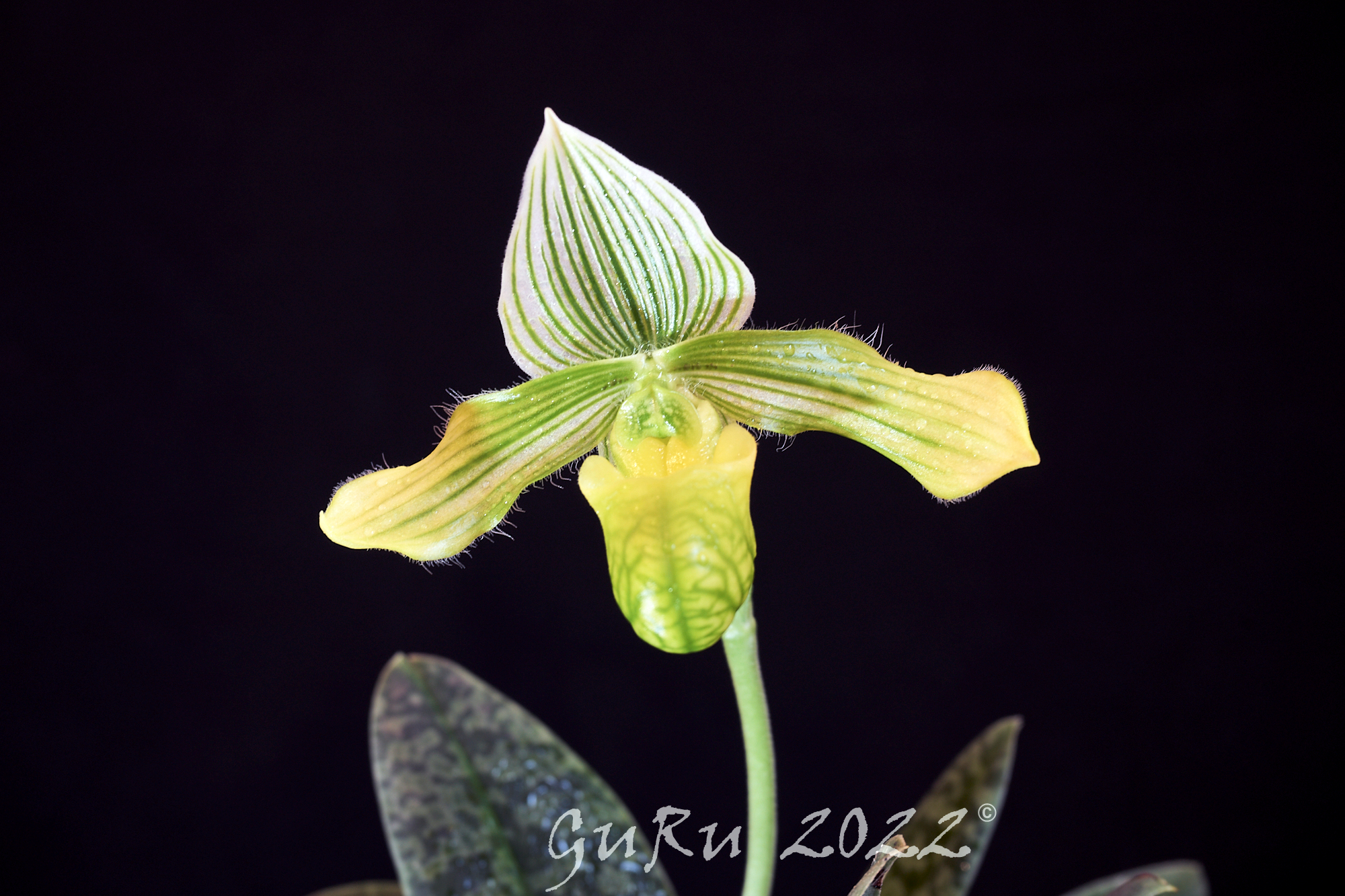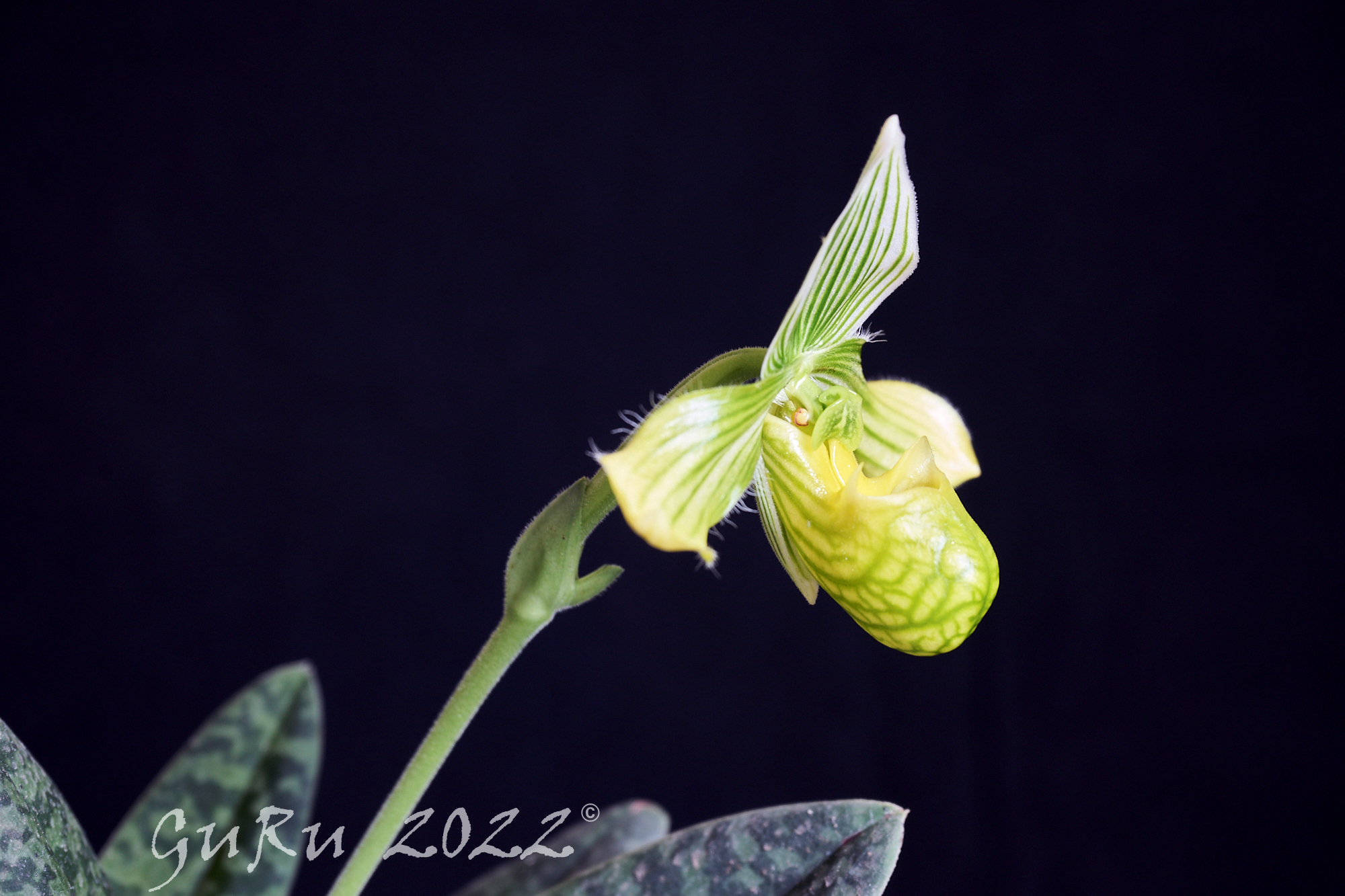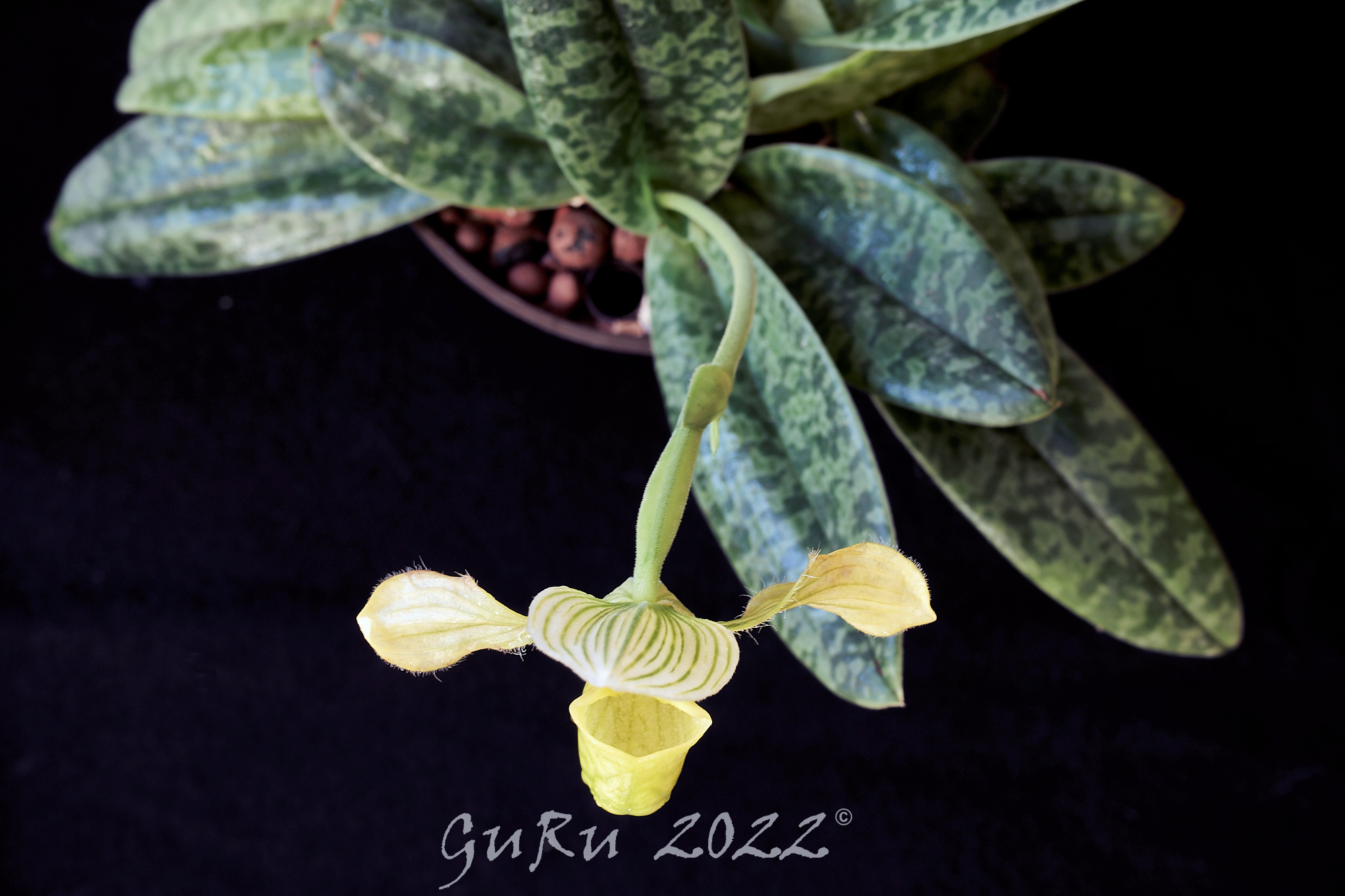I have now finally had some time to do a bit of homework ..... Braem clearly and unequivocally asserts in the 2nd Edition of his comprehensive "The Genus Paphiopedilum", that " Plants offed as albinos of P. venustum sometimes show, although faintly, the remnants of reddish or brownish pigmentation. However, only those clones lacking any red or brown should be accepted as albinos" (p. 266, 2016). I can't distinguish any red or brown, however faint, in the photo in his book of this colour form (p. 389, ibid.).
Cribb in the 2nd edition of his monograph on "The Genus Paphiopedilum" is fully in accord with Braem's point of view: "... [A]lbino plants, referable to var. measuresianum, lacking any maroon or purple colour in the leaves and flowers are occasionally seen in collections ..... It is perhaps best treated as a form" (p. 392, 1998). Sadly, Cribb provides no photo of this colour form, but refers magnanimously to Braem (1988) for providing "[e]xcellent photo-graphs [sic] of this" (ibid.).
Gruß in his lavishly illustrated book on "The Genus Paphiopedilum. Albino Forms" shows photos of as well flowers without as with anthocyanin specks - but what the latters pertain, he clearly sees them as an abberation of the albino colour form, fma. measuresianum, as he explicitely makes the following qualifying statement in the photo caption: "shown as forma. alba [sic] but with black spots" (p. 181, 2008). A view that is fully in accordance with Gruß' overall concept of albinism in Paphiopedilums, which he presents in the introduction to the book (p. 8, ibid.).
Stephen might be right in assuming, that the original description was imprecise or lacking, but ..... Braem quotes an anonymous, contemporaneous source on the November 28th, 1893, meeting of the Royal Horticultural Society, where Measures exhibited the colour form for the first time: "an extraordinary and beautiful form with white and green flowers, without any of the brown and red seen in the type" (p. 266, 2016).
.....




































